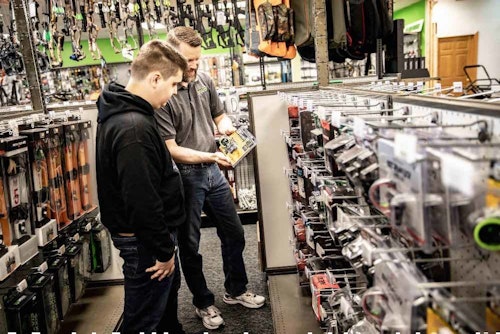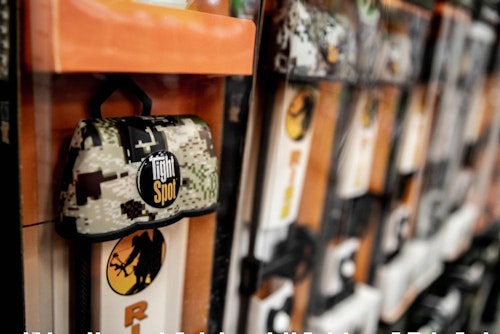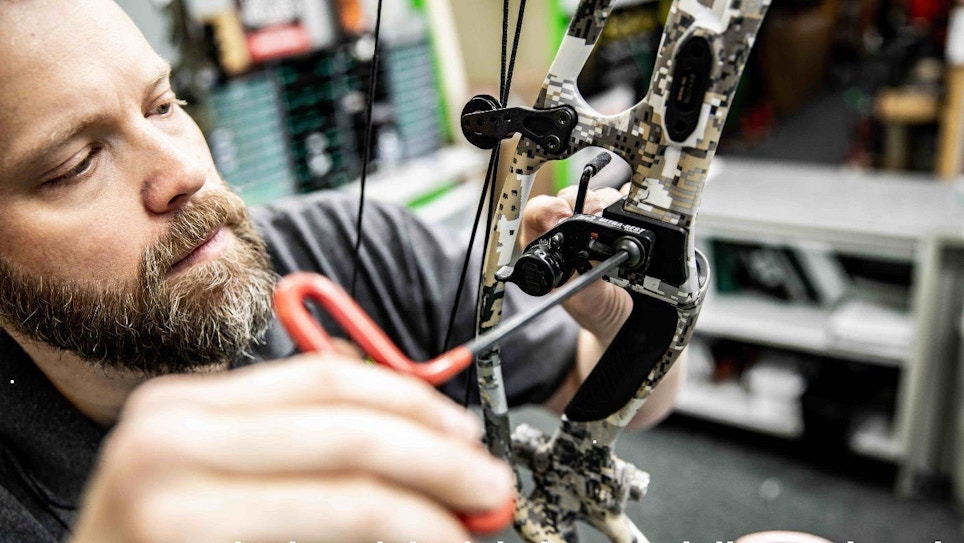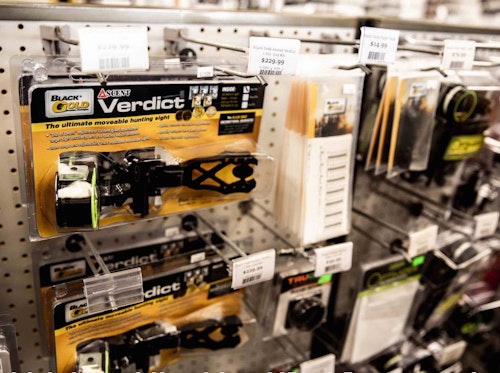When I’d finished selling my customer everything to outfit his new Hoyt compound back in 2008, the bill totaled more than $2,000. He’d asked me to set up his bow with everything that I was currently using on my own bow, and he didn’t bat an eye as I showed him expensive accessories. He had the budget to buy the best of the best, and fortunately, I had the best of the best on my shelves.
What began as a $900 bow sale morphed into more than double. It happened by having the right accessories on hand, the ability to sell, and the credibility to back it all up. It was the easiest sale of my archery retail career. Perhaps you’ve experienced a similar scenario. Transactions like that one are great, but not all transpire so easily.
Setting the Stage
Archery accessories are an important product category. Based on their necessity, I’m sure that you’re selling plenty of them annually. But, could you be selling even more? Are there changes you could make that would optimize your approach? Many metrics equate to a successful accessory merchandising strategy, especially since there are so many different accessory companies and SKUs from which to choose.
Aimed at archery dealers looking to tighten things up and grow their sales, this article will offer several insights that can help you optimize your accessory strategy. Follow along as I summarize a recent discussion I had with Justin Gaiche of Chase Outdoors in Rothschild, Wisconsin, who has done exceptionally well with accessory sales by being attentive to little details.

Makes, Models and the Customer’s Budget
Most dealers land on a concrete accessory program after some trial and error.
“I’ve gone down a lot of different roads with accessories since I opened my store,” Gaiche said. “In the beginning, I was eager to satisfy everyone. Naturally, I thought I had to carry everything because saying ‘no’ to a customer is very painful.”
After trying different angles, Gaiche found that “taking the pro shop approach,” as he put it, was the sweet spot. “When you’re a genuine expert and a destination store, you’ll find that people look to you for equipment advice and will buy what you sell. Figure out just a handful of brands you believe in, and then get behind them.”
Gaiche takes a good, better, best approach to stocking bow accessories.
“I don’t want to sell a $19.99 bowsight,” he said, “and I don’t have any in the store. Likewise, I don’t want to insult people on a budget and show them a $300 sight. For budget sights, I try to find the best bang for my customer’s buck. I’m not going purely for the cheapest sight. I’m going for something inexpensive that I believe will perform on their needs and provide a good bridge between value and quality. I feel that .30-06 Outdoors does a really nice job in that low-end category. The quality is there considering the price points. Another good example is PSE Archery. I can sell PSE accessories with confidence, yet still respect my customer’s budget.
“Wisconsin-based HHA Sports is the next step up and has both affordable and high-end options. Black Gold is my personal sight choice, so I obviously sell many of them. I can explain to my customers what I’ve been through as an archer and why I choose Black Gold’s high-end Ascent Verdict. We order it in a special configuration that I’ve found works really well for me as an archer, plus it gives my store a level of exclusivity. Even though it’s somewhat expensive, I can sell them in droves because I believe in them and can share my experiences with my customers.”
Schaffer Performance Archery in Burnsville, Minnesota, you may recall from a previous Behind the Counter column, believes a dealer can do more harm than good by offering too many brands. Owner John Schaffer said, “Our store traditionally buys narrow, but deep. In other words, we don’t offer tons of different products, but we purchase large quantities of the ones we offer.”
Gaiche shares that mindset. “I offer one, maybe two, brands each in the good, better and best price categories. I believe in those brands, and seldom do my customers refuse to buy what I have in stock. The acronym I’ve learned in retail, SWAT (sell what’s available today), really helps me go after the sale and not constantly fall back on special ordering or bring in more brands. In-the-field experience and believing in what I sell means most customers buy what’s on my pegs."

Dexterity
It’s incredibly difficult to predict the ratio of right- and left-handed accessories you’ll sell. Gaiche finds that offering ample left-handed accessories works well for him.
“I really pride myself in keeping left-handed bows and accessories in stock,” he said. “I know that we do it very well because our customers tell us we do. Part of that is because my staff is 50 percent left-handed. That has helped me stay attentive to their needs, as well as my customers’ needs. Generally speaking, my ratio is about one left-handed customer for every 10 right-handed customers. I always make sure to have good, better and best accessories in left-handed configurations on hand.”
Stocking multiple left-handed accessories is generally less risky than stocking a pile of left-handed bows. Accessories, technologically speaking, typically change less from year to year, meaning their values don’t really decrease when you carry them over from one year to the next. Customers know which bow models are a year old, and getting full retail for a year-old bow is difficult to do. In contrast, accessories often retain their retail values for at least a couple of years.
Finishes
Now more than ever before, the numerous finishes available on today’s archery equipment are astounding. At one time, most bows were finished in Realtree and/or Mossy Oak camo patterns. Today, there are close to a dozen different camo finishes on bows, not to mention a plethora of trending solid colors. That leads to question: In which finishes should I order accessories? Gaiche weighed in.
“Nearly all of my in-stock sights and arrow rests are finished in black,” he said. “I don’t chase camo sights or arrow rests. In select cases, I’ll bring in a solid color other than black — olive or gray — on a QAD or Hamskea rest. Where I try to offer the cornucopia of colors is in my premium quivers. A quiver provides a larger surface, so that’s where customers really tend to gravitate toward finishes that exactly match their bows.
“Many times, I can steer my customers toward a black quiver. Black accessories always look great. But, if I’m selling a customer a $150 TightSpot quiver, I’ll go the extra mile and get him or her into a quiver that matches their bow. And they appreciate that."

Bottom Line
Finally, a subcategory of bow accessories that gets less attention is the profit-heavy small stuff such as kisser buttons, silencers, wrist slings and other little things customers don’t always remember. As a dealer, don’t overlook them.
“Another way to increase your sales with accessories is to sell small add-ons,” Gaiche said. “It’s amazing how many times we add $8.99 to a sale because we ask. It’s our job to be educated. I don’t look at it as selling a customer a product. Instead, I look at it as making him or her aware of options that exist. If I ask a customer, ‘Would you like to add this to your bow?’, the response is commonly ‘Yes.’ I make them aware of a certain little accessory, state the features and benefits, and they’re often like, ‘Yeah, give me that!’
“When you’re working on a customer’s bow or setting up a new one, you have the customer captive. Show them everything. You don’t have to tell them they need something. But, don’t be afraid to tell them about what’s available, either. Some archery dealers sell compound bows and don’t accessorize them enough. Customers are coming to you because you’re the expert, and they want you to tell them what works and what’s available. When you accessorize a bow well, you make a great impact on your customer.”
Sidebar: Accessory Profit Margins
As an archery dealer, you must take care of yourself in the realm of profit margins, but not at the risk of selling your customer junk.
“To be very honest with you, I don’t make my purchasing decisions based on margins much at all,” Gaiche said. “Rather than buy an alternative brand because it’s cheaper, I go for a higher volume through the manufacturers I believe in, and that nets me a better deal on my orders, thus improving my margin potential. We’ve seen our margins increase because we focus more dollars into fewer companies to get discounts. Further, being in a buying group is a massive game-changer.
“When I’m selling several hundred dollars of accessories, I’m not going to sweat over $20. I’m going to take care of my customer and sell them the best accessories I can. They see my effort, and I make the additional dollars through their repeat business."
Sidebar: Dealing with Brand Loyal Customers
Inevitably, you’ll encounter customers who are loyal to specific brands. That is, they’ll either acquire the accessories they want from elsewhere, or they’ll ask you to order them if you don't have them in stock. Of course, you can try to sell them on what you believe in and have in stock, but don’t expect all to cave and buy. Some customers simply hold their ground and want specific accessories, and that’s OK.
“We absolutely go get the sale in that scenario,” Gaiche explained. “We’re a Sports, Inc. member and we were previously an NABA member, so we have relationships with many manufacturers. If we can, we’ll go direct to the manufacturer, but we’ll go through a wholesale distributor if it means getting the product faster.
“While selling what you have in stock is always ideal, I believe that being willing to go get specific products for customers is a huge fundamental difference between pro shops and box stores. The box stores just say, ‘No, we don’t carry that,’ and they lose the customer. We go get the product, and we get to work with that customer more in the future because of our diligence.”
Photos by Darron McDougal







